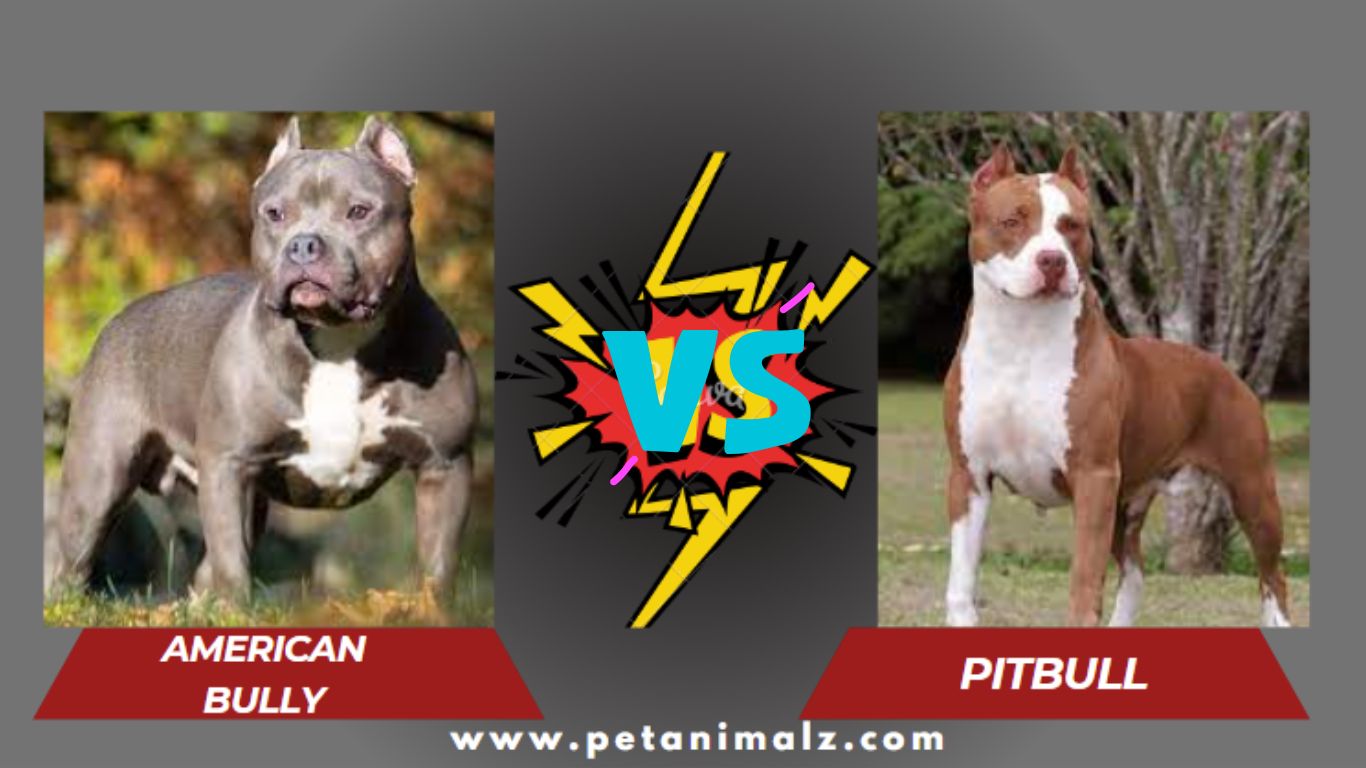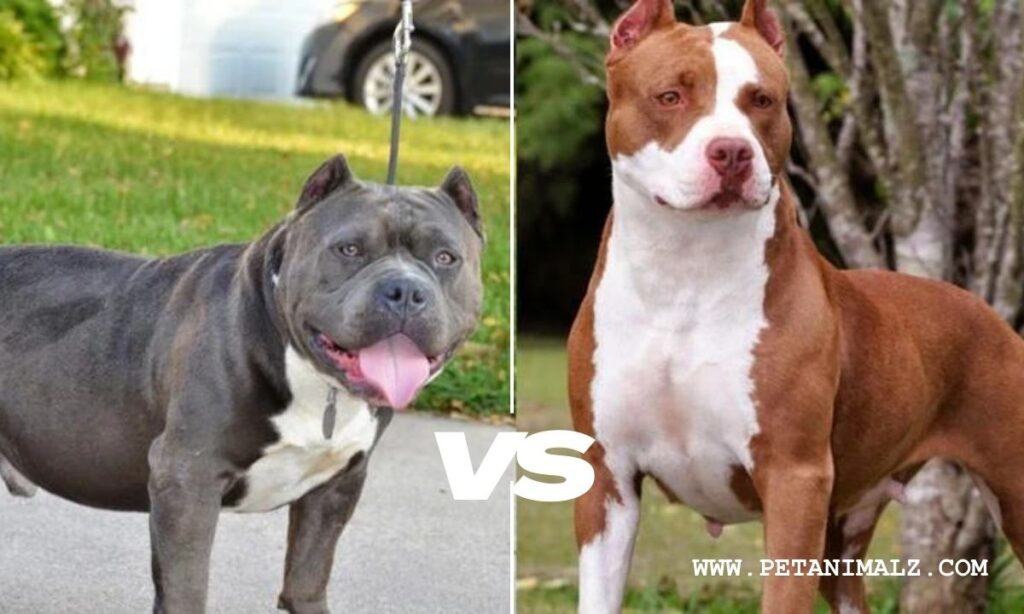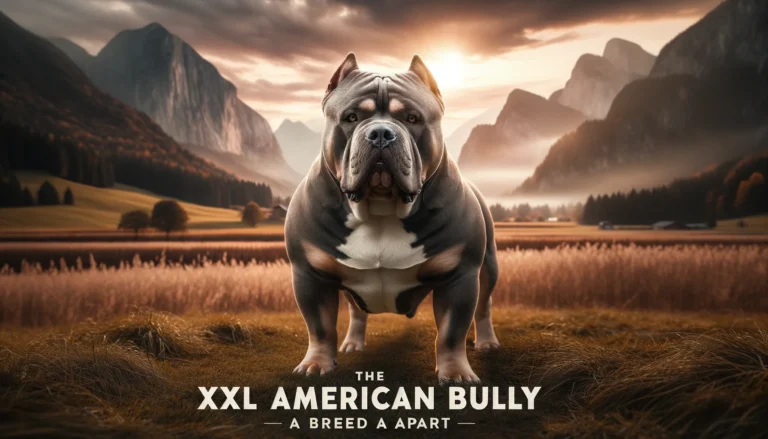American Bully vs Pitbull: Unraveling the Differences
Introduction
The world of dog breeds is vast and varied, American Bully vs Pitbull with each breed having its own unique characteristics, history, and temperament. Among the many breeds, two that often get confused due to their similar appearances are the American Bully and the Pitbull.
However, while they might look somewhat alike, these two breeds have distinct histories, characteristics, and reputations. This article aims to shed light on these differences, helping potential dog owners, breed enthusiasts, and the general public understand each breed better.

Background Information of American Bully vs Pitbull
-
American Bully
The American Bully is a relatively new breed, having been developed in the late 20th century. Its origins can be traced back to crossbreeding efforts between the American Staffordshire Terrier and the American Pit Bull Terrier. These efforts were further complemented by the inclusion of other breeds such as the Old English Bulldog, American Bulldog, and English Bulldog. The result was a breed with a unique appearance and temperament, distinct from its parent breeds.
In 2013, the United Kennel Club officially recognized the American Bully as a separate breed. This recognition was a significant milestone, validating the breed’s distinct identity. There are four primary types of American Bullies: Pocket, Standard, Classic, and XL. However, it’s worth noting that in Europe, the breed isn’t universally recognized. Some regions even classify it as a “dangerous dog” breed, leading to legal restrictions on ownership.
-
Pitbull
The term Pitbull in the U.S. doesn’t refer to a single breed. Instead, it’s a collective descriptor encompassing several breeds, including the American Staffordshire Terriers, Staffordshire Bull Terriers, American Bullies, and American Pit Bull Terriers. Sometimes, the lineage of American Bulldogs is also included under this umbrella term.
The Pitbull’s reputation is a mixed bag. On one hand, they are known for their loyalty, intelligence, and affectionate nature. On the other, they have been associated with dog fighting and have faced negative media attention due to high-profile attacks. This controversial reputation has led to breed-specific legislation in various regions, imposing legal restrictions on Pitbull ownership.
Historically, the Pitbull’s origins can be traced back to the 1800s. They were initially bred for fighting, making them common participants in dog fighting rings during that era. Over time, as dog fighting became illegal and frowned upon, the breed’s reputation began to shift, with many now advocating for the breed’s gentle and loving nature when raised in the right environment.
Understanding the differences between the American Bully and the Pitbull is crucial for potential dog owners, breed enthusiasts, and anyone interested in the world of canine breeds. While they may share some similarities, their histories, characteristics, and reputations set them apart.
Overview of American Bully vs Pitbull Breeds’ Recognition and Popularity
American Bully
Recognition:
- The American Bully was officially recognized by the United Kennel Club (UKC) in 2013.
- The breed is also recognized by the American Bully Kennel Club (ABKC), which was formed specifically for the breed.
- However, it’s worth noting that the American Bully is not recognized by some major kennel clubs, such as the American Kennel Club (AKC).
Popularity:
- The American Bully has seen a surge in popularity, especially in the United States, due to its unique appearance and friendly nature.
- Its popularity is also attributed to its role as a companion animal, with many owners praising its loyalty and affectionate demeanor.
- The breed has a strong following on social media, with many breed enthusiasts showcasing their pets and participating in breed-specific events.
Pitbull (American Pit Bull Terrier)
Recognition:
- The American Pit Bull Terrier (APBT) is recognized by the United Kennel Club (UKC).
- However, the American Kennel Club (AKC) does not recognize the APBT. Instead, they recognize the American Staffordshire Terrier, which shares a similar lineage but has different breed standards.
- The breed is also recognized by other organizations, such as the American Dog Breeders Association (ADBA).
Popularity:
- The term “Pitbull” often stirs controversy due to the breed’s history and some high-profile incidents. This has led to breed-specific legislation in various regions, which has impacted its popularity.
- Despite the controversies, many owners and advocates passionately defend the breed, highlighting its loyalty, intelligence, and affectionate nature.
- The APBT and related “Pitbull” breeds have a strong community of supporters who work towards improving the breed’s image and advocating against breed-specific bans.
Detailed Comparison of American Bully vs Pitbull
Size
When it comes to size, both the American Bully vs Pitbull have their unique measurements:
- American Bully:
- Males typically measure between 17 to 20 inches in height.
- Females range from 16 to 19 inches.
- Weight can vary, but the Classic American Bully usually weighs between 60 to 120 pounds.
- Pitbull:
- Males stand between 18 and 21 inches tall.
- Females are between 17 and 20 inches.
- Weight can range from as light as 45 pounds to as heavy as 90 pounds.
Appearance
The appearance of these breeds is where many people get confused:
- American Bully:
- Coat is short, close to the skin, firm, and glossy.
- Head is moderately long with a deep, wide skull.
- Pronounced cheek muscles and high-set ears.
- Pitbull:
- Broad mouths often giving the appearance of a smile.
- Blocky heads and ears that project outward.
- Coat can come in a vast array of colors, with some standards regarding color percentages.
Breed Origins of American Bully vs Pitbull
Understanding the origins of these breeds provides insight into their characteristics:
- American Bully:
- Emerged in the late 20th century.
- Developed primarily as a companion animal.
- Rapidly gained popularity due to its unique size and build.
- Pitbull:
- Traces back to the 1800s.
- Originally bred for fighting.
- Over time, their reputation shifted from fighters to loyal companions.

Training Needs of American Bully vs Pitbull
- American Bully:
- Can be stubborn due to their English bulldog lineage.
- Benefits from early and consistent training with positive reinforcement.
- Pitbull:
- Intelligent and eager to please.
- Responds well to positive reinforcement and is a quick learner.
Dietary Requirements of American Bully vs Pitbull
- American Bully:
- Requires more food due to its larger size.
- Crucial to avoid overfeeding to prevent obesity.
- Pitbull:
- Typically requires less food than the American Bully.
- Essential to provide a balanced diet for optimal health.
Lifespan and Health of American Bully vs Pitbull
- American Bully:
- Vulnerable to health issues like joint complications and hip dysplasia.
- Average lifespan ranges from 10 to 12 years.
- Pitbull:
- Generally experiences fewer health problems.
- With proper care, can live between 12 and 16 years.
Pricing
- American Bully puppies are generally more expensive, with prices starting from around $1,200.
- Pitbull puppies from reputable breeders usually start at around $1,000.
Pros and Cons of American Bully vs Pitbull
American Bully:
- Pros: Friendly, gentle, good with children, low-maintenance grooming.
- Cons: Can be aggressive if not socialized, prone to health problems, shorter lifespan.
Pitbull:
- Pros: Loyal, affectionate, intelligent, good with children.
- Cons: High energy, strong prey drive, can be aggressive if not socialized.
FAQs
-
Is an American Bully the same as a pitbull?
-
-
- No, the American Bully and the Pitbull are not the same. While they may share some similarities in appearance, they are distinct breeds with different histories and characteristics.
- The American Bully was developed in the late 20th century through the crossbreeding of the American Pit Bull Terrier and other breeds, while the term “Pitbull” is a general descriptor that can encompass several breeds, including the American Pit Bull Terrier.
-
-
Are American Bullies aggressive?
-
-
- American Bullies are generally known for their friendly and affectionate nature, especially when properly socialized from a young age. However, like any breed, if they are not properly trained or socialized, they can exhibit aggressive tendencies. It’s essential to understand that individual dog behavior can vary based on upbringing, training, and socialization.
-
-
Why are pitbulls called Bully?
-
-
- The term “Bully” in breeds like the American Bully vs Bulldog often refers to their muscular build and strong, “bull-like” appearance. The name “Pitbull” is derived from their historical use in bull-baiting and later in dog fighting pits. The term “bully” in this context doesn’t imply a bullying nature but rather describes their robust and sturdy physique.
-
-
What is the difference between a pitbull and an American pitbull?
-
-
- This can be a bit confusing. When people refer to “Pitbull,” they are often using a general term that can encompass several breeds, including the American Pit Bull Terrier, American Staffordshire Terrier, and sometimes even the Staffordshire Bull Terrier.
- On the other hand, the American Pit Bull Terrier (often abbreviated as APBT) is a specific breed with its own set of standards and characteristics. So, while all American Pit Bull Terriers are “Pitbulls,” not all “Pitbulls” are American Pit Bull Terriers.
-
-
What are the main differences between an American Bully and a Pitbull?
- Size, appearance, and breed origins are the primary differentiators.
-
Are American Bullies more aggressive than Pitbulls?
-
-
- Both breeds can be aggressive if not properly socialized, but they are generally friendly and loyal.
-
-
Which breed is easier to train?
-
- While both breeds are trainable, Pitbulls are often seen as quicker learners.
Conclusion
Choosing between an American Bully and a Pitbull requires understanding their differences and similarities. Both breeds have their unique characteristics, but with proper care, training, and socialization, they can be loyal and loving companions. Making an informed decision ensures a harmonious relationship between the pet and its owner.



